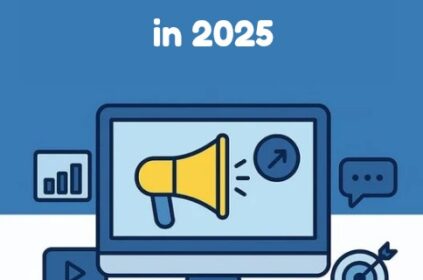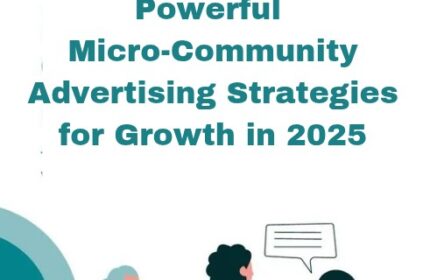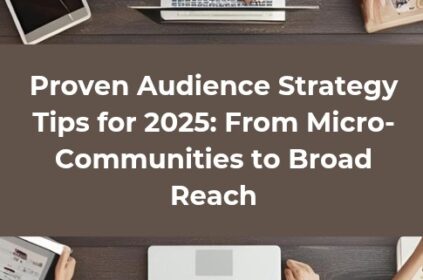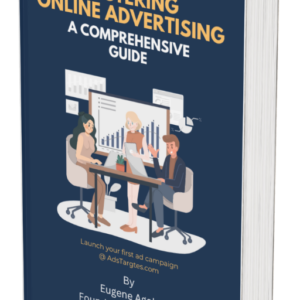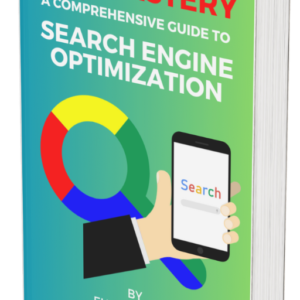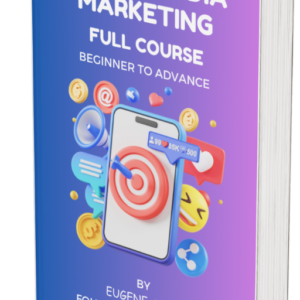In 2025, advertisers face one of the most persistent challenges in Meta’s ecosystem—audiences getting tired of seeing the same ads over and over again.
When this happens, engagement drops, costs rise, and campaign efficiency falls apart. This problem, known as creative fatigue in Meta Ads, has become a critical barrier to scaling profitable campaigns.
Marketers are investing heavily in Meta Ads because the platform still drives unmatched reach and conversion potential.
But without a plan to monitor and refresh ad creatives, even the best targeting and bidding strategies lose their edge.
Research from Insider Intelligence shows that a large share of advertisers cite declining relevance scores as a key reason campaigns underperform.
That makes creative fatigue not just a creative issue, but a business problem. Here’s how to manage it.
Understanding Creative Fatigue in Meta Ads

Creative fatigue in Meta Ads occurs when your target audience sees the same visuals, copy, or formats so frequently that engagement begins to decline.
This challenge directly affects click-through rates (CTR), cost per acquisition (CPA), and ultimately your return on ad spend (ROAS).
While Meta’s own machine learning models optimize delivery, repeated exposure still leads to ad blindness and rising costs over time.
This makes it one of the most pressing optimization issues in Meta’s ecosystem. The platform thrives on novelty and relevance—so when your campaigns stall, it usually means audiences are overexposed to the same message.
The financial implications are significant. When creative fatigue in Meta Ads sets in, advertisers often see costs per result climb by as much as 30 percent within a two-week period.
Since Meta Ads operate on an auction system, fatigued creatives hurt not only your CTR but also your bid competitiveness, causing higher CPMs (cost per thousand impressions).
Understanding how this phenomenon works is the first step to solving it.
Marketers need to assess frequency metrics, engagement drop-offs, and conversion lag to identify when ads stop resonating.
From there, the solution lies in a disciplined creative rotation process, informed by data rather than guesswork.
Key Signs That Show Creative Fatigue in Meta Ads
Spotting creative fatigue in Meta Ads requires vigilance. Meta provides several metrics in Ads Manager that serve as early warning signals.
Among the most telling indicators is falling CTR despite stable impressions. When users no longer feel compelled to click, it suggests the creative has lost impact.
Another clear marker is an increase in frequency score.
High frequency is not inherently bad in retargeting campaigns, but in prospecting campaigns it almost always correlates with fatigue.
Declining ad relevance diagnostics—which include quality ranking, engagement ranking, and conversion ranking—also reveal when fatigue is setting in.
Ads that once scored “above average” can slip to “below average” within days, signaling that Meta’s algorithm now deems them less competitive.
Lastly, monitor rising CPMs and CPCs without changes in targeting.
If your cost metrics are climbing while impressions remain flat, it usually means the platform is penalizing your ad for overexposure.
By combining these diagnostic signals, marketers can create a reliable monitoring framework. The faster you identify creative fatigue in Meta Ads, the quicker you can refresh assets and restore efficiency.
Why Creative Fatigue in Meta Ads Hurts Performance
The damage caused by creative fatigue in Meta Ads extends far beyond short-term drops in engagement.
One of the biggest risks is budget inefficiency. Ads with declining CTR still consume daily spend allocations, but they drive fewer conversions.
Over time, this erodes ROAS and limits your ability to scale. Creative fatigue also negatively impacts Meta’s delivery algorithm.
Since the platform rewards ads that generate positive engagement, fatigued creatives reduce your chances of winning auctions at favorable CPM rates.

It also hurts customer perception. Audiences repeatedly shown the same ad can experience brand annoyance, reducing long-term trust.
Instead of fostering familiarity, overexposure creates the impression that a brand lacks variety or innovation in its messaging.
In competitive verticals such as e-commerce, SaaS, and financial services, these effects compound quickly.
If a rival rotates their creatives while you do not, their ads will gain a competitive edge in auctions, driving your CPC higher.
Ultimately, ignoring creative fatigue in Meta Ads does not just slow campaign momentum—it drains budgets, hurts auction performance, and reduces customer goodwill.
For advertisers managing lean budgets in 2025, these losses are unsustainable.
Proven Strategies to Prevent Creative Fatigue in Meta Ads
Preventing creative fatigue in Meta Ads requires a structured approach to asset planning. One of the most effective methods is implementing a creative rotation calendar.
Instead of waiting until performance declines, schedule fresh ad sets to launch every 7–10 days. This proactive rotation ensures audiences are consistently exposed to variety.
Second, build creative variations at scale. Advertisers using at least four unique creative formats in an ad set see up to 32 percent better performance.
Mix static images, carousel ads, short-form videos, and dynamic product ads to keep engagement high.
Third, leverage audience segmentation. Different audience groups may respond better to different creative angles.
By tailoring creatives to match prospecting, retargeting, and lookalike segments, you avoid overexposing all users to the same message.
Fourth, use dynamic creative optimization (DCO). This Meta feature automatically tests multiple variations of copy, images, and CTAs, then serves the highest-performing combinations.
By relying on machine learning, you reduce manual guesswork and prolong creative lifespan.
Finally, refresh your messaging with seasonal hooks or trending topics. Aligning ads with cultural moments, holidays, or product launches adds novelty that breaks fatigue.
By combining these strategies, marketers can design a workflow where creative fatigue in Meta Ads becomes less of a recurring obstacle and more of a manageable variable in campaign planning.
Methods to Measure Creative Fatigue in Meta Ads
While intuition is useful, solving creative fatigue in Meta Ads requires hard data. Start by setting baseline performance metrics for new campaigns.
Measure CTR, CPC, CPM, and conversion rates in the first three days of launch. These numbers form the benchmark for detecting deviations.
Meta Ads Manager provides breakdowns by frequency and placement. By exporting this data weekly, you can track when performance declines correlate with higher ad frequency.

For example, if CTR drops 20 percent while frequency climbs past 3.5, you have a clear signal of fatigue.
Advanced marketers integrate third-party analytics tools like Adverity or Wicked Reports to centralize data from Meta alongside Google Ads, TikTok, and email.
This cross-channel analysis helps determine whether performance drops are due to fatigue or broader market shifts.
Another effective method is incrementality testing. Run split tests where one group continues seeing the existing creative while another group is served new variations.
Comparing results validates whether creative fatigue in Meta Ads is the actual cause of underperformance.
Finally, build automated alerts in Ads Manager. By creating rules that notify you when CTR falls below a threshold or CPC rises above target, you can respond before fatigue drains significant spend.
This data-driven approach ensures fatigue detection is not guesswork but a measurable, repeatable process that integrates seamlessly into campaign management.
How to Refresh Creative Without Derailing Meta Campaigns
Refreshing ads is essential, but poor execution can reset learning phases or disrupt optimized delivery.
To prevent this, use Meta’s duplicate and edit workflow rather than fully replacing fatigued ads. This way, you retain accumulated performance data while updating creative elements.
Small changes often suffice to beat fatigue.
Updating the headline, switching background colors, or introducing new product angles can reset audience interest without needing a full creative overhaul.
For larger updates, stagger the rollout. Replace only part of an ad set at a time so that delivery continues smoothly.
Launch new creatives during peak engagement windows—such as weekends for consumer goods or weekdays for B2B sectors—to accelerate the learning curve.
Consider leveraging user-generated content (UGC) as a source of fresh assets. UGC often performs better than brand-produced content because it appears authentic and varied.
By carefully refreshing creatives while respecting delivery mechanics, advertisers can address creative fatigue in Meta Ads without sacrificing stability or algorithmic optimization.

Managing Creative Fatigue in Meta Ads Beyond 2025
Looking ahead, the challenge of creative fatigue in Meta Ads will only intensify. As more brands compete for attention on Meta platforms, audience saturation will accelerate.
However, advancements in automation and AI-driven personalization promise new solutions.
Meta is expanding its Advantage+ Creative suite, which automatically tailors text and visuals for different users.
By personalizing creatives at scale, this reduces the risk of fatigue because each audience segment sees a version optimized for their preferences.
Predictive analytics tools are also gaining ground. Platforms such as Pattern89 apply AI to historical performance data to forecast when creative fatigue will occur.
This allows marketers to refresh assets before decline sets in.
Additionally, advertisers are diversifying placements. Instagram Reels, Stories, and Messenger ads offer alternative environments where fresh formats thrive.
By spreading spend across multiple placements, brands reduce reliance on a single creative type and extend campaign longevity.
The broader shift toward creative as a performance lever means design teams now work hand-in-hand with media buyers.
Creative iteration is no longer a one-off task but an ongoing optimization cycle.
In 2025 and beyond, brands that treat creativity as a measurable asset—constantly tested, refreshed, and scaled—will outperform those that do not.
Managing creative fatigue in Meta Ads will remain a cornerstone of efficient advertising strategy, especially as competition and costs rise.
The key lies in proactive rotation, real-time monitoring, and embracing new automation tools that make fatigue less disruptive.
Conclusion
Creative fatigue in Meta Ads is one of the most common yet overlooked challenges facing advertisers in 2025. Left unmanaged, it inflates costs, drains budgets, and damages audience perception.
However, by recognizing early warning signs, applying structured rotation strategies, and leveraging data-driven tools, marketers can prevent fatigue from derailing campaigns.
The brands that win will be those that integrate creative iteration into their core advertising workflows, treating freshness not as an afterthought but as a performance driver.
With disciplined planning and proactive monitoring, solving creative fatigue in Meta Ads becomes not just possible, but a competitive advantage that fuels long-term growth.



